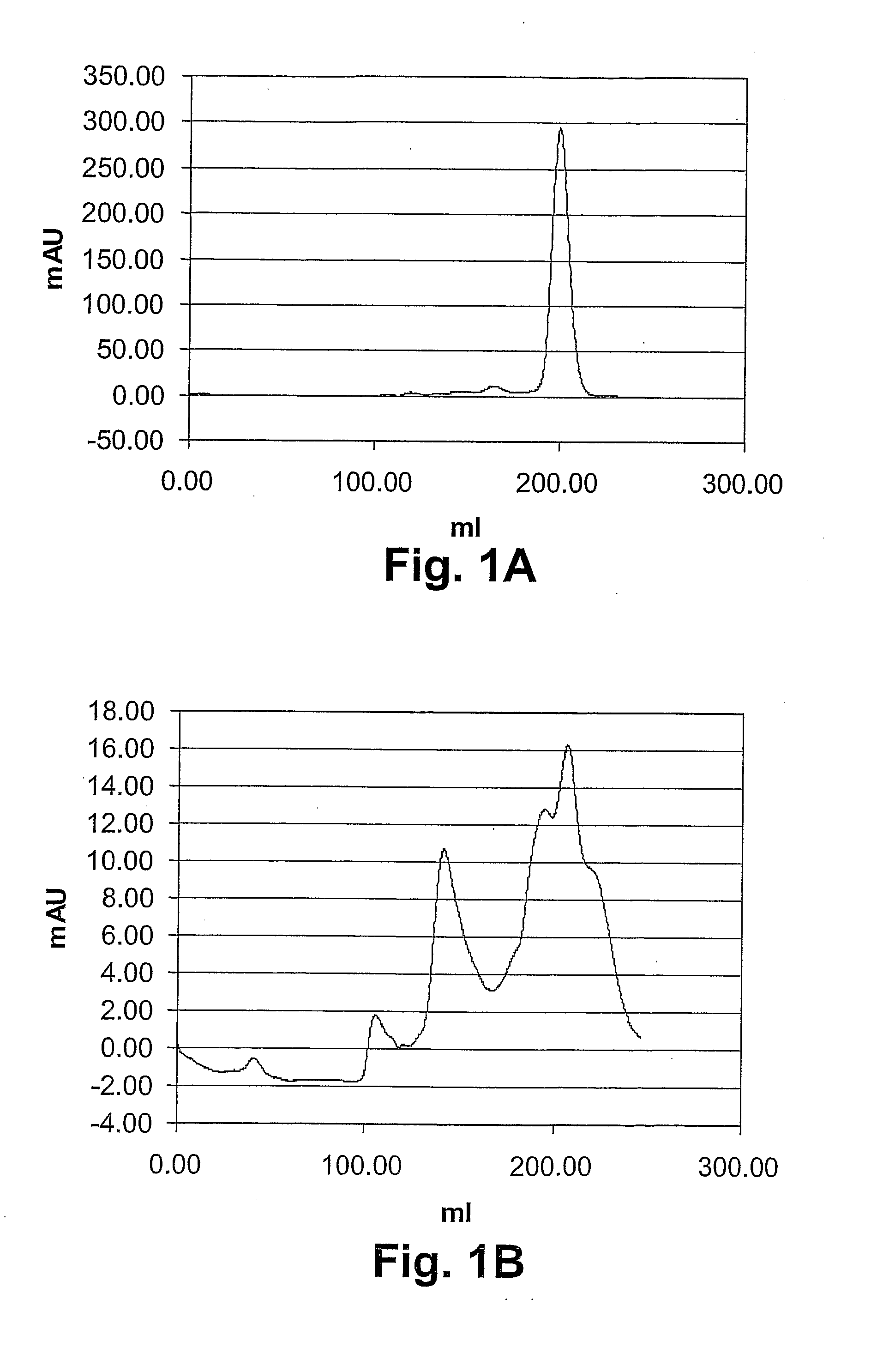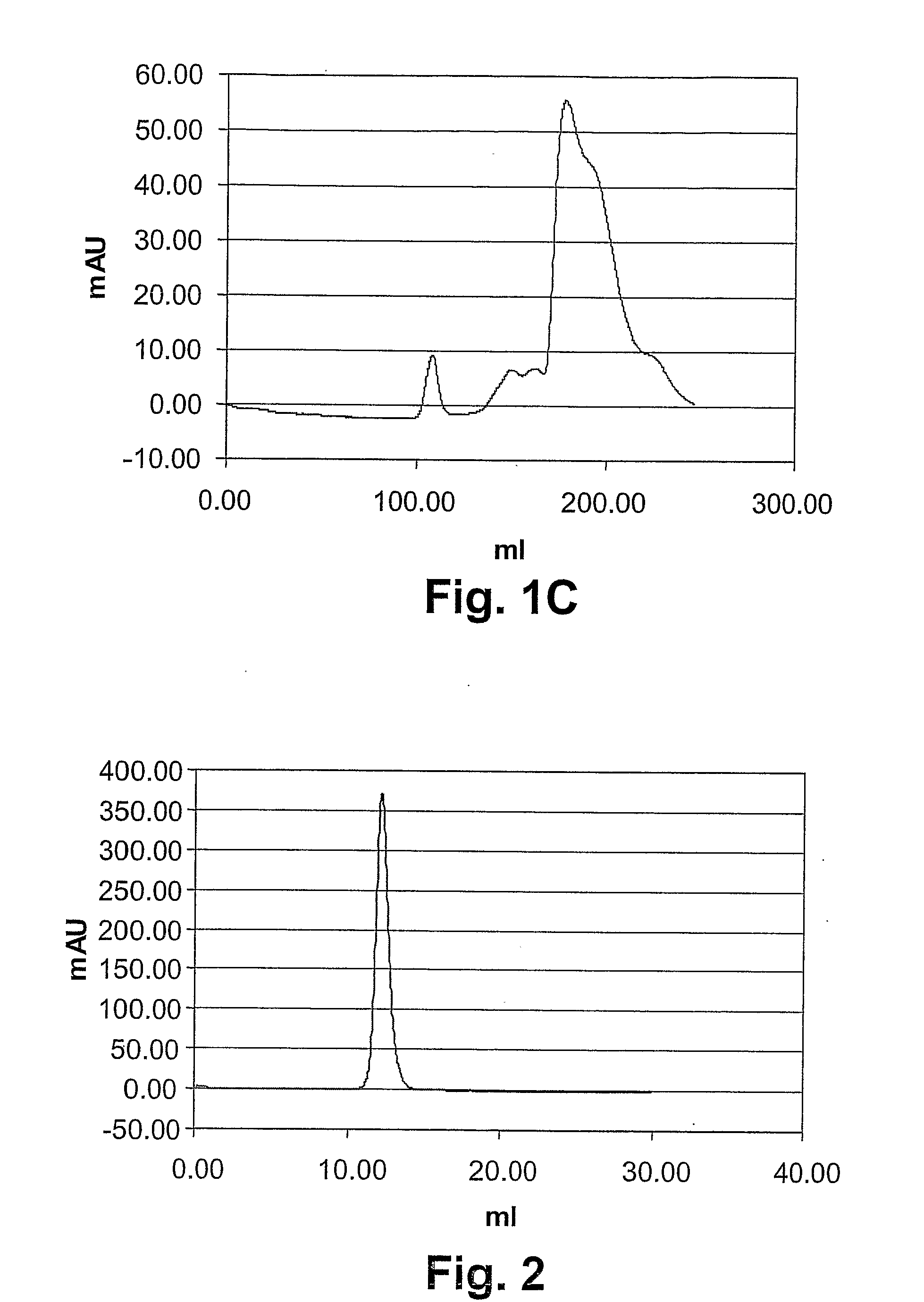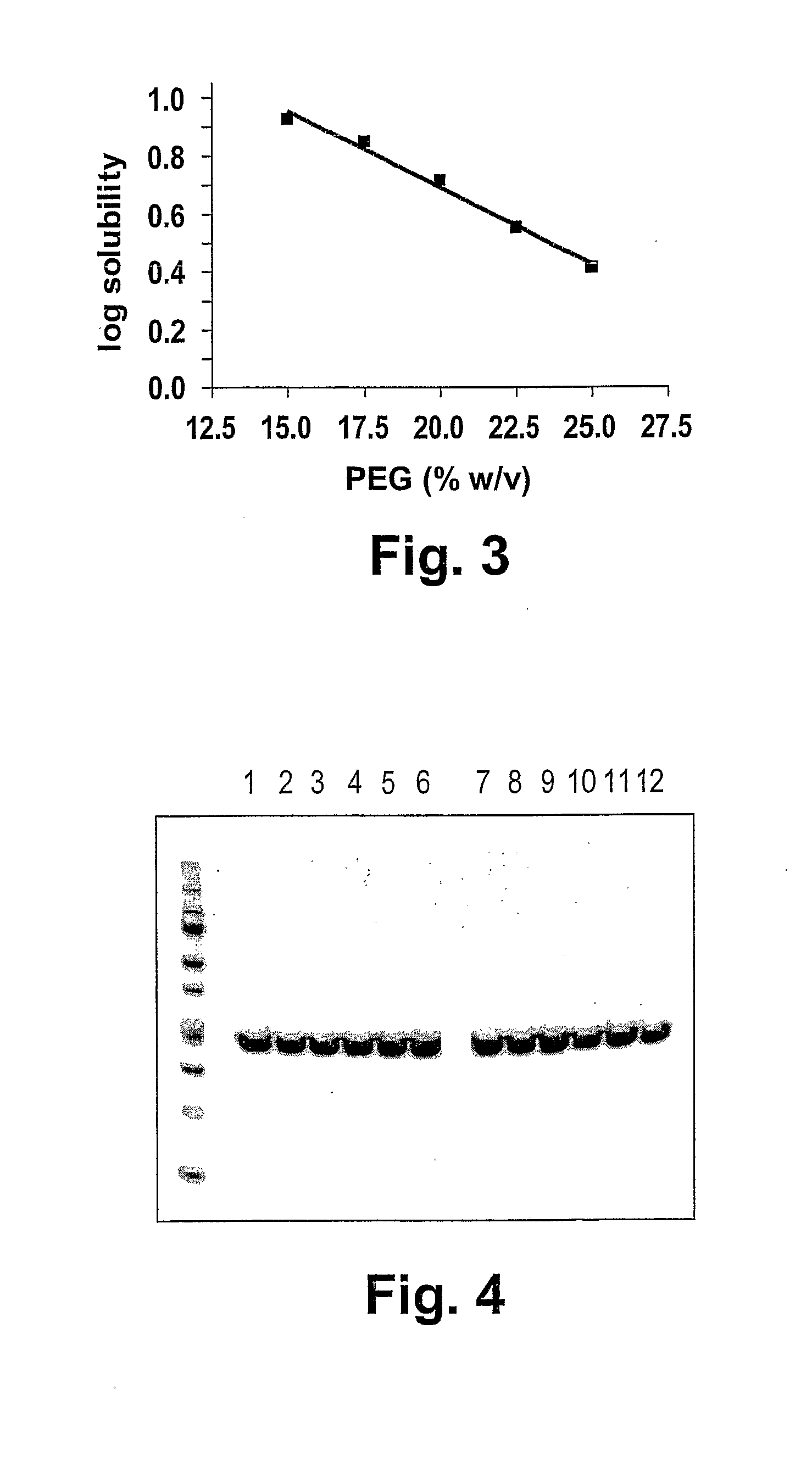Scfv antibodies which pass epithelial and/or endothelial layers
a technology of epithelial and endothelial layers, applied in the field of scfv antibodies, can solve the problems of refractory to mucosal delivery, large antibodies that cannot cross the tight junctions of epithelial cell layers, and the inability of other therapeutic compounds to achieve mucosal delivery, etc., to achieve the effect of improving tissue penetration ability
- Summary
- Abstract
- Description
- Claims
- Application Information
AI Technical Summary
Benefits of technology
Problems solved by technology
Method used
Image
Examples
example 1
Production of scFvs
[0171]ScFv antibodies were produced via expression as inclusion bodies, followed by a refolding and a chromatography step. Three single-chain antibodies were produced. This includes two conventional scFvs, which presumably do not fulfill the criteria of being well soluble, particularly stable and monomeric. One of them is TB-wt (SEQ ID No: 14), which was constructed by linking the natural VL and VH sequences of the murine anti-TNFα monoclonal antibody Di62 (Doring et al., 1994). The other one is lucentis-scFv, which was constructed by linking the VL and VH sequences of the VEGF-specific Fab fragment ranibizumab (SEQ. ID. No:15). ESBA105 is an scFv, which carries the CDRs of Di62 and which reveals a Kd value in the nanomolar range for TNFα. Solubility, stability and monomeric behavior of ESBA105 were optimized by employing an scFv framework, which was selected by the so-called Quality Control system (Auf der Maur et al., 2004). The amino acid sequence of ESBA105 is...
example 2
Biophysical Characterization of scFvs
[0188]In order to investigate their “drug-likeness”, ESBA105 and some of its derivatives were biophysically characterized. Characterization involved the determination of (1) solubility parameters (PEG precipitation and B22 value; the B22 value is a measure for protein self-interaction, shich is important in protein crystal growth, solubilisation and aggregation. See Valente et al., Biophys J. 2005 December; 89(6):4211-8. Epub 2005 Sep. 30), (2) the pI values, (3) the measurement of thermal and chaotropic denaturation, and (4) the quantification of the monomeric fraction as compared the oligomeric fraction. The results of items 1-3 are summarized in Table 1, which also includes relative potency values as determined by the L929 and the KYM-L1 assay, respectively.
TABLE 1Summary of data on some ESBA105 derivatives.Smax(PEGB22 valueSEQpIprec.)(SIC)ESBA1057.81.839 ± 0.133−24.5 × 10−4 ± 3.8 × 10−4ESBA105-QC2.27.8ndndESBA105-QC7.1ndndESBA105-QC11.28.21.9...
example 3
Stability of scFv During Storage
[0189]The stability of the scFv over time is an important feature in the context of a pharmaceutical. FIG. 4 shows an analysis of the ESBA105 scFv (lanes 1-6) and the QC15.2 scFv (lanes 7-12) that were separated by SDS-PAGE and stained with Coomassie after two weeks of storage at different temperature (−80° C.: lanes 1, 3, 5, 7, 9, and 11) or 40° C.: lanes 2, 4, 6, 8, 10 and 12) and concentrations (20 mg / ml: lanes 1, 2, 7 and 8; 10 mg / ml; lanes 3, 4, 9 and 10; 1 mg / ml: lanes 5, 6, 11 and 12). The antibodies remained stable over the entire ranges of temperature and at all tested concentrations, and no signs of degradation or aggregation were found.
[0190]An antibody that is stable over a certain time should also retain its full activity. Therefore, we tested ESBA105 eight weeks after storage at 37° C. or −80° C. in L929 assays for their activity. The result is presented in FIG. 5, and no difference between the two temperatures could be seen.
PUM
| Property | Measurement | Unit |
|---|---|---|
| concentration | aaaaa | aaaaa |
| concentration | aaaaa | aaaaa |
| concentration | aaaaa | aaaaa |
Abstract
Description
Claims
Application Information
 Login to View More
Login to View More - R&D
- Intellectual Property
- Life Sciences
- Materials
- Tech Scout
- Unparalleled Data Quality
- Higher Quality Content
- 60% Fewer Hallucinations
Browse by: Latest US Patents, China's latest patents, Technical Efficacy Thesaurus, Application Domain, Technology Topic, Popular Technical Reports.
© 2025 PatSnap. All rights reserved.Legal|Privacy policy|Modern Slavery Act Transparency Statement|Sitemap|About US| Contact US: help@patsnap.com



